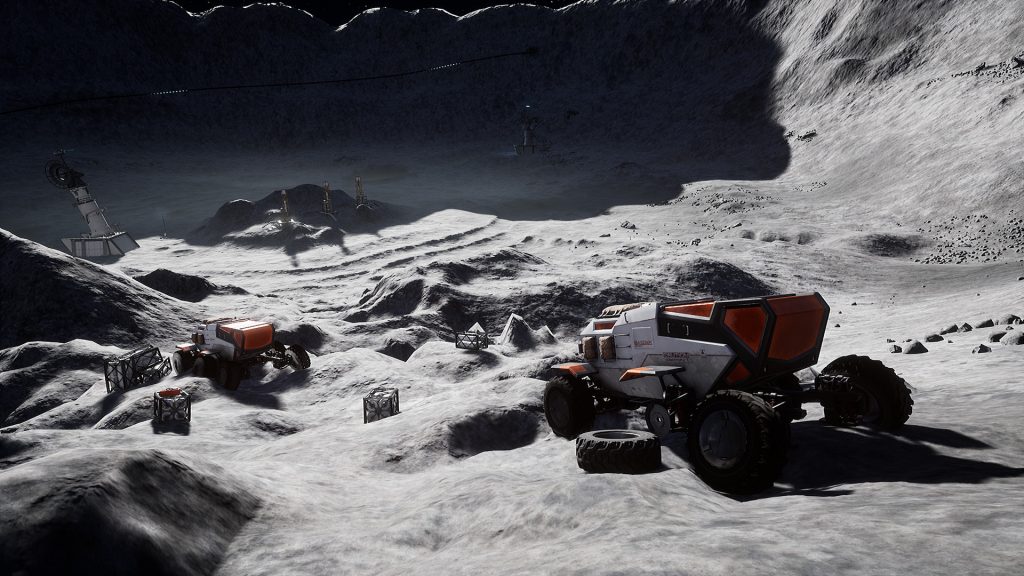Summary
Deliver Us the Moon is a technically ropey but artistically impressive sci-fi thriller with some real edge-of-your-seat set-pieces.
This review of Deliver Us the Moon is based on the Xbox One version. It is also available on PC, PS4, Switch, Linux and Mac, and is currently available as part of the Xbox Game Pass service.
Popular media rarely paints a flattering portrait of humanity, and virtually never imagines a rosy vision of our future, which puts Deliver Us the Moon among obviously influential company in staging its sci-fi thriller against the backdrop of a ruined Earth wrung of its resources and beset by constant unpleasant natural phenomena. Mimicking the setup and structure of various popular narrative games that see the player-character arriving at a location that has been ruined or abandoned and task them with assembling the mystery of what happened, the most noteworthy novelty here is that the location being investigated happens to be on the moon.
Deliver Us the Moon revels in this. Your first task is to launch a rocket; before long you’re grappling with zero-G, rapidly-depleting oxygen reserves, and the various technical hiccups of a lunar station that has fallen into disrepair. The gameplay is the usual blend of poking around, puzzle-solving, and the odd environmental platforming obstacle, all set against a layered narrative that unfolds through discoverable documents, audio files, emails, and holographic vignettes; some clunky writing and acting thankfully don’t offset what is otherwise a grounded space-set mystery.

But it’s the white-knuckle set-pieces of Deliver Us the Moon that really help to set it apart, with its numerous and obvious genre influences – many plucked from film rather than games, as it happens – helping to inspire some dramatic moments made all the more immersive with tactical use of absorbing first-person. (A lot of the game takes place in third-person, and the game tends to choose whichever viewpoint is best for each portion.)
If Deliver Us the Moon was in better shape technically, it’d stand up to scrutiny more than it does, however, since the version I played, on Xbox One via the Xbox Game Pass service, had a bevy of issues from lurching framerate drops to inconsistent texture resolution to clunky auto-saving, it’d be a lie to suggest that the immersion is sustained throughout. These spotty issues – all consequences of a limited team and budget, but there nonetheless – are natural obstacles to all the fine work done in the details of the setting and the scenario; this is a game about exploring a deserted moon base that really does, for the most part, make you feel as though you’re exploring a deserted moon base – it just never quite stops feeling like a game, either.



